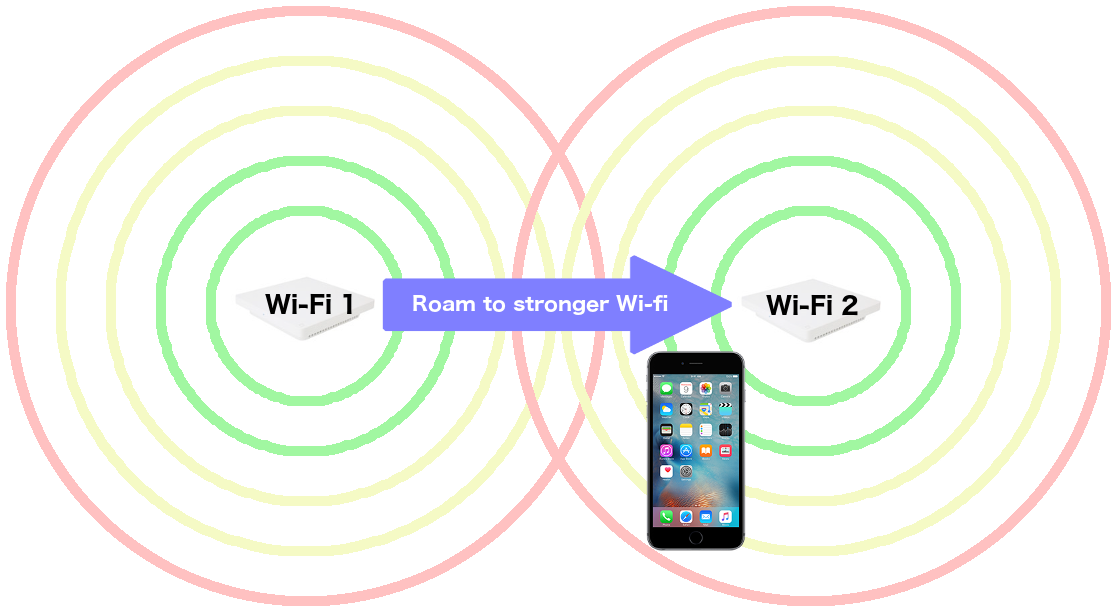
These days, good Wi-Fi coverage seems to be as important as the air we breath. You likely need more than just a Wi-Fi router to provide a strong Wi-Fi signal throughout your home. This is especially true since since so many devices rely on good Wi-Fi. Great, so you decide that you’ll use multiple Wi-Fi routers or access points to improve coverage – the issue is that you may still find that your Wi-Fi performance is poor – typically when you move around. The reason is likely that Wi-Fi devices like mobile phones and tablets decide when to switch to a different Wi-Fi signal, but they usually don’t want to let go of a Wi-Fi signal unless its completely unusable. This is where fast roaming can come to your rescue.
You may not think you ‘roam’ around your home, but you likely move around enough that you’re not always close to the Wi-Fi signal that you started with. You get a wide range of Wi-Fi signal strengths to your devices as you walk around your home. This is not only due to size and layout of a home, but also due to building material (e.g. Wi-Fi doesn’t travel well through concrete or metal). Newer devices are usually compatible with fast roaming, but they need help. Better Wi-Fi access points have fast roaming as a configurable option. Fast roaming Wi-Fi equipment (based on IEEE 802.11r and 802.11k standards) negotiates handoff with the device. This way your mobile phone or laptop can be switched to a stronger Wi-Fi signal without you noticing, allowing multiple Wi-Fi access points to work together in your home to handle your Wi-Fi needs.
Make sure you or your tech architect designs your home’s networking to support fast roaming. Its not enough to put a bunch of Wi-Fi access points around your home, you have to make sure they’ll actually work in concert to give you solid Wi-Fi coverage that you’ll appreciate. Happy fast roaming!
